Wishing everyone happy holidays and a joyful New Year from the Healthify team. Don't forget to Slip, Slop, Slap and Wrap!
Inhaler devices
Key points about inhaler devices
- For asthma, chronic obstructive lung disease and other breathing problems, there are many different types of inhalers (or 'puffers') that are used to help get the medicine into your airways where it's needed.
- You can find the one that suits you best by talking to your healthcare provider or asthma educator.
- Find out about inhaler devices and how to use them.

An inhaler is a device used to deliver medicine to your lungs and airways. It's mainly used to treat or prevent diseases of the airways, eg, asthma, chronic obstructive pulmonary disease (COPD) or cystic fibrosis. By getting medicine directly to your lungs, smaller doses of medicine are needed and it can start working faster.
What are the different types of inhalers?
The main types of inhaler devices are metered dose inhalers and dry powder inhalers.
Metered dose inhalers
The metered dose inhaler or MDI is an aerosol inhaler used to deliver a short burst, or puff, of medication. Read more about metered dose inhalers below.
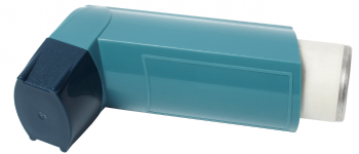
Image credit: Canva
Dry powder inhalers
Dry powder inhalers are handheld devices that deliver medicine to your lungs and airways as you inhale through it. Examples of dry powder inhalers include:
-
- Turbuhaler®
- Accuhaler®
- Handihaler®
- Ellipta® inhaler
- Breezhaler®
- DuoResp Spiromax®
Read more about these different types of dry powder inhalers below.
Soft mist inhaler
The Respimat® device is a soft mist inhaler. Read more about the Respimat® device below.
- Inhaled medicines are an important part of asthma and chronic obstructive pulmonary disease (COPD) care.
- Because inhalers come in many different shapes and sizes, you can find the one that suits you best, by discussing it with your healthcare provider or asthma educator.
- Not all medicines are available in all the different types of inhaler devices.
- You may want to try some devices before choosing the one you're most comfortable with.
Things to consider when choosing an inhaler |
||
| Metered dose inhaler (MDI) | Advantages
|
|
| Dry powder inhalers | Advantages
|
|
| Inhalation powder in a hard capsule used in an inhaler |
Advantages
|
|
| Soft mist inhalers | Advantages
|
|
If the inhaler devices are unsuitable, your healthcare provider may recommend the use of a nebuliser. Read more about nebulisers.
If you're concerned about the impact of your inhaler on climate change, read more about inhalers and the environment.
- To get the most benefit from the medicine, it's important to use the correct technique when using your inhaler. This is so you get the right amount of medicine and that it reaches deep inside your lungs.
- Ask your healthcare provider to show you how to use your inhaler device.
- Even if you've had asthma or COPD for a long time and have used the same inhaler for years, it's still worth reminding yourself regularly how they work.
Metered dose inhalers are also called MDIs or aerosol inhalers.
- The medicine is in a small canister, inside a plastic case.
- When the inhaler is pressed, a measured dose of medicine comes through the mouthpiece.
- Exactly the same dose is released each time.
- MDIs require good technique and coordination by pressing down on the inhaler and breathing in at the same time.
- Because using the inhaler correctly can be difficult, spacer devices are recommended for use with MDIs. The spacer is attached to the MDI to make it easier to use the inhaler and get more medicine into your lungs. See the image below.
- MDIs contain different medicines including preventers, relievers, symptom controllers and combinations of medications. Read more about asthma medicines in adults, asthma medicines in children and medications for COPD.
To get the most benefit from your inhaler, it's important to use the correct technique. Ask your healthcare provider to show you how to use an MDI device.
An MDI is the name of the device used to deliver the medicine to your lungs and airways. There are different names for each MDI depending on the medicines inside the device.
- It's important to know the name and colour of your MDI, eg, Ventolin®, Flixotide®, Serevent® or Respigen®.
- Your MDI may be a different colour to the one in the videos below. Read more about understanding your medicines(external link).
Using a spacer
A spacer is an attachment to use with your MDI. Using a spacer with your MDI makes it easier to use the inhaler and helps to get the medicine into your lungs, where it’s needed (with less medicine ending up in your mouth and throat). Spacers improve how well your medicine works. Children over 10 years of age may be able to use an MDI without a spacer; however, babies and young children must use MDIs with a spacer or a spacer and a mask. Read more about spacers.
Video: How to use your spacer device
The video below provides some guidance on how to use an MDI with a spacer.
(Healthify He Puna Waiora, NZ and Auckland District Health Board, 2018)
Video: MDI and spacer
(Asthma Waikato, NZ, 2018)
Common mistakes when using an MDI
- Breathing in too fast.
- Breathing out so hard that you cough.
- Pressing the puffer too early before you have started to breathe in (if you see a mist of medicine from your mouth, then you're making this mistake).
- Tilting your head down – it should be tilting back slightly.
- Pressing the inhaler twice during a single inhalation.
- Giving the inhaler a 'test puff' into the air and wasting the medicine.
- Breathing in through your nose instead of your mouth.
If you think you might be doing any of these things, ask your healthcare provider to watch you using your inhaler to make sure you're using the right technique.
Cleaning your MDI
Clean your inhaler every week to ensure it doesn't get blocked. It's best to follow the cleaning instructions that come with your inhaler, but here is some general guidance.
- To clean the inhaler, remove the mouthpiece cap and metal canister from the plastic casing.
- Rinse the plastic part under warm running water for at least 30 seconds.
- Shake off the water, and let it air-dry.
- Once dry, put the metal canister back into the plastic part.
- Test your inhaler by releasing one puff, then replace the cap.
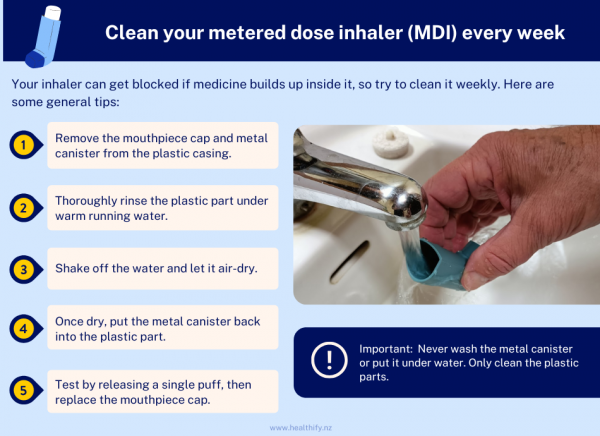
Image credit: Healthify He Puna Waiora
Storing your MDI
- Always keep the cap on your inhaler when it's not in use.
- Store spare inhalers in cool places (not in your car glove box).
- Carry a spare clean plastic case so you can change it if the one you're using becomes blocked.
When to start a new MDI
- By shaking the inhaler it's possible to hear if there's any medicine left in the canister.
- Always have a spare inhaler ready, start this before the old one is completely empty.
- It may help to write the start date on the inhaler, so you can work out how long it will last with daily use. There are usually 200 puffs per canister.
The Turbuhaler® is a breath-activated device – this means it will release a dose of medicine when you take a breath in through the mouthpiece.
- The Turbuhaler delivers the medicine in a dry-powder form. There's no propellant added to the medicine.
- When you breathe in a dose of the medicine, you will hardly notice any powder in your mouth.
- Preventers, relievers, symptom controllers and combination medicines are available as turbuhalers.
- Children from 5 years of age should be able to use a dry powder inhaler.
Examples of medicines available as a Turbuhaler
- terbutaline (Bricanyl®)
- formoterol (Oxis®)
- budesonide plus formoterol (Symbicort®)
- budesonide (Pulmicort®)
When is a Turbuhaler device suitable?
Since the Turbuhaler is a breath-activated device, to use the Turbuhaler properly, you must be able to breathe in deeply.
- Adults and children 5 years of age and older should be able to use a Turbuhaler.
- Some people (eg, those with severe COPD) may not able to breathe in well enough to activate the Turbuhaler.
If you don't know if a Turbuhaler is the correct device for you, talk to your healthcare provider.
How to use a Turbuhaler device
To get the most benefit, it is important to use the correct technique. Ask your healthcare provider to explain how to use your Turbuhaler.
The video below provides some guidance on how to use a Turbuhaler device. A Turbuhaler is the name of the device used to deliver the medicine to your lungs and airways. There are different names for each Turbuhaler depending on the medicines inside the device.
- It's important to know the name and colour of your Turbuhaler, eg, Bricanyl®, Oxis® or Pulmicort®.
- Your Turbuhaler may be a different colour to the one in the video below. Read more about understanding your medicines(external link).
Video: How to use your Turbuhaler device
(Healthify He Puna Waiora & Auckland District Health Board, NZ, 2018)
Using a Turbuhaler device:
- Open: Unscrew and remove the cap. Hold the Turbuhaler upright.
- Load the dose: Twist the base anticlockwise and then back in the other direction until you hear a click. Your Turbuhaler is now loaded with 1 dose of medicine
- Breathe out: Breathe out, away from the Turbuhaler. Don't blow directly into the Turbuhaler.
- Inhale your dose: Place the mouth piece in your mouth and form a seal with your lips. Breathe in deeply. Remove the turbuhaler and hold your breath for up to 10 seconds.
- Close: Replace the cap and twist until it's on properly.
- Rinse your mouth: Rinse and spit out the water or clean your teeth after using any inhaler that contains a corticosteroid. Ask your healthcare provider if you’re not sure.
Cleaning and storing a Turbuhaler device
Wipe the mouthpiece with a clean dry tissue. Don't wash the mouthpiece or allow it to get wet when cleaning. Keep the cap on when you're not using it. The device may get blocked if you breathe out or dribble into it. It can also block up if it's stored in a place where there's high humidity (dampness) with the cap off or unsealed.
When to start a new Turbuhaler
There's a window under the mouthpiece on the outside of the Turbuhaler called a dose indicator window. When it turns red it's time to get a new Turbuhaler.
Common problems when using a Turbuhaler device
To get the most benefit, it's important to use the correct technique. Here are a few common problems:
- Not holding your Turbuhaler upright (vertical) while loading the dose.
- Covering the air inlets with your lips.
- Breathing in through your nose instead of your mouth.
- Shaking the inhaler to see how much is left.
- Storing your Turbuhaler in a damp place with the cap off.
An Accuhaler® is a breath-activated device – this means it will release a dose of medicine when you breathe in through the mouthpiece.
- Doses of the medicine are preloaded in foil-covered blister packets inside the device.
- There are 60 doses in each Accuhaler – these can be counted with the dose counter on the device.
Examples of medicines available as an Accuhaler
- salmeterol (Serevent®)
- fluticasone (Flixotide®)
- fluticasone and salmeterol (Seretide®)
When is an Accuhaler suitable?
Since the Accuhaler is a breath-activated device, you must be able to breathe in deeply to use it properly.
- Adults and children 4 years of age and older should be able to use an Accuhaler.
- Some people (eg, those with severe COPD) may not able to breathe in deeply enough to activate the Accuhaler.
If you're not sure if the Accuhaler is the correct device for you, talk to your healthcare provider.
How to use an Accuhaler device
To get the most benefit from your Accuhaler, it's important to use the correct technique. Ask your healthcare provider to show you how to use an Accuhaler device.
The video below provides some guidance on how to use an Accuhaler. An Accuhaler is the name of the device used to deliver the medicine to your lungs and airways. There are different names for each Accuhaler® depending on the medicines inside the device.
- It's important to know the name and colour of your Accuhaler, eg, Flixotide®, Seretide® or Serevent®.
- Your Accuhaler may be a different colour to the one in the video below. Read more about understanding your medicines(external link).
Video: How to use an Accuhaler inhaler
(Ask the doctor/NHS, UK, 2022)
Using an Accuhaler device:
- Open: Hold the Accuhaler® in one hand, and with the thumb of the other hand push the thumb grip away from you until you hear a click. This reveals the mouth piece.
- Load the dose: Hold the inhaler in a horizontal position. Slide the lever away from you until you hear a click.
- Breath out: Breathe out, away from the Accuhaler. Don't blow directly into your device.
- Inhale your dose: Place the mouth piece in your mouth and form a seal with your lips. Breathe in deeply and forcefully through your mouth. Remove the accuhaler and hold your breath for up to 10 seconds. If you need another dose, wait for 30 seconds and then repeat the process
- Close it: Close the inhaler by sliding the thumb grip towards you.
- Rinse your mouth: Rinse and spit out the water or clean your teeth after using Flixotide® and Seretide® accuhalers that contain a corticosteroid.
Cleaning and storing an Accuhaler device
Wipe the mouthpiece with a clean dry tissue. Don't wash the mouthpiece or allow it to get wet when cleaning. Close the device when you're not using it.
When to start a new Accuhaler
There's a window on the side of the accuhaler called a dose counter. When it turns red it's time to get a new accuhaler.
Common problems when using an Accuhaler device
To get the most benefit, it's important to use the correct technique. Here are a few common problems:
- Not loading a dose before using the Accuhaler.
- Not holding the Accuhaler horizontally while loading and inhaling the dose. Never hold the inhaler with the mouthpiece pointing down during or after loading a dose; this can cause the medicine to fall out. Keep it horizontal.
- Not breathing in strongly enough to draw the medicine out of the Accuhaler and into your lungs.
- Not holding your breath long enough after using the Accuhaler.
- Getting moisture inside the Accuhaler.
- Not closing the Accuhaler cover after use.
The HandiHaler® is used for the medicine tiotropium (also called Spiriva® capsules). Do not swallow the capsules – they must be used by inhaling the contents of the capsule with the HandiHaler device provided.
- The HandiHaler is a breath-activated device – this means it will release a dose of medicine when you inhale on the mouth piece.
- Tiotropium (Spiriva® capsules) is used for people with COPD. Read more about tiotropium.
How to use your HandiHaler
To get the most benefit, it's important to use the correct technique when using your HandiHaler. Ask your healthcare provider to show you how to use it. The video below provides some guidance.
Video: How to use your Spiriva HandiHaler
(Healthify He Puna Waiora & Auckland District Health Board, NZ, 2018)
Using your HandiHaler
- Open: Press the green button on the side of the HandiHaler to open the lid. Lift the lid to see the mouthpiece. Pull on the mouthpiece to reveal the capsule chamber.
- Load the capsule: Spiriva® capsules come packaged in blister strips. Peel back the foil from 1 blister strip to release 1 capsule. Don't remove the capsule by pushing it through the foil – this will damage the capsule. Place the capsule into the capsule chamber. Close the mouthpiece firmly until you hear a click.
- Pierce the capsule: Press the green button on the side to pierce the capsule.
- Breathe out: Sit upright, tilt your head back (into 'sniff' position) and breathe out gently. Don't breathe into the device.
- Inhale your dose: Put the mouthpiece into your mouth and seal your lips firmly around it. Breathe in rapidly and deeply through your mouth. You will hear the sound of the capsule vibrating in the chamber. Remove the HandiHaler from your mouth and hold your breath for up to 10 seconds.
- Take 2 breaths from the same capsule: To get your full daily dose, you must take a second breath from the same capsule. You won't need to pierce the capsule again.
- Discard the used capsule: After inhaling your dose, open the mouthpiece and discard the used capsule. Close the mouthpiece and the lid of the inhaler.
Cleaning the HandiHaler device
- Clean the device once a month.
- Open the protective cap, mouthpiece and base.
- Rinse the whole device with warm water and air-dry thoroughly for 24 hours.
- Clean the outside of the mouthpiece with a damp tissue when needed.
When to start a new HandiHaler
You can use your HandiHaler for up to 1 year before replacing. A new one can be prescribed for you or you can buy one from your pharmacy.
Common problems when using the HandiHaler device
To get the most benefit, it's important to use the correct technique. Here are a few common problems:
- Piercing the capsule several times or not piercing the capsule at all.
- Not breathing in strongly enough to draw the medicine out of the inhaler.
- Not taking a second breath to get the full dose from the capsule.
- Swallowing the capsule instead of inhaling it through the HandiHaler.
- Not using a new capsule for each dose.
The Ellipta® inhaler is a preloaded, breath–activated device, this means that the inhaler has the medicine inside and will release a dose when you inhale through the mouthpiece.
- The Ellipta inhaler delivers the medicine in a dry–powder form.
- There's no propellant added to the medicine.
- When you breathe in a dose of the medicine, you'll hardly notice any powder in your mouth.
Examples of medicines available as a Ellipta inhaler
- umeclidinium + vilanterol (Anoro® Ellipta®)
- fluticasone furoate + vilanterol (Breo® Ellipta®)
- umeclidinium (Incruse® Ellipta®)
- fluticasone + umeclidinium + vilanterol (Trelegy® Ellipta®)
How to use an Ellipta device:
To get the most benefit, it's important to use the correct technique. Ask your healthcare provider to explain how to use your Ellipta inhaler. The following video provides some guidance on how to use an Ellipta device. An Ellipta is the name of the device used to deliver the medicine to your lungs and airways. There are different names for each Ellipta depending on the medicines inside the device.
- It's important to know the name and colour of your Ellipta, eg, Anoro®, Breo®, Incruse® or Trelegy®.
- Your Ellipta device may be a different colour to the one in the video below. Read more about understanding your medicines(external link).
Video: How to use an Ellipta device
Using an Ellipta device:
- Remove the device from the foil packing.
- Open: pull back the mouth piece cover until you hear a click. Hold the device upright at all times.
- Breathe out: Hold the inhaler away from your mouth and breathe out fully.
- Inhale your dose: press your lips around the mouthpiece without covering the air vents on either side. Begin to breathe in rapidly and deeply through your mouth. Hold your breath for up to 10 seconds. Remove the inhaler from your mouth.
- Breathe out slowly. Close the mouth piece cover.
- Rinse your mouth: Rinse and spit out the water or clean your teeth after using Breo® Ellipta® inhalers that contain a corticosteroid.
Cleaning and storing an Ellipta device
Clean your device once a week by wiping the mouthpiece with a clean dry tissue. Don't wash the mouthpiece or allow it to get wet when you're cleaning it. Close the device when it's not in use. Store it in a cool dry place, away from heat and moisture.
When to start a new Ellipta device
There's a window on the front of your Ellipta inhaler called a dose counter. When it turns red it's time to get a new inhaler.
The Breezhaler® is a breath-activated device – this means it will release a dose of medicine when you inhale through the mouthpiece.
- The Breezhaler delivers the medicine as a dry–powder. There's no propellant added to the medicine.
- When you breathe in a dose of the medicine, you'll hardly notice any powder in your mouth.
Examples of medicines available as a Breezhaler®
- glycopyrronium (Seebri®)
- indacaterol (Onbrez®)
- glycopyrronium + indacaterol (Ultibro Breezhaler®)
How to use your Breezhaler device
To get the most benefit, it's important to use the correct technique. Ask your healthcare provider to show you how to use your Breezhaler device. THe video below provides some guidance on how to use a Breezhaler.
A Breezhaler is the name of the device used to deliver the medicine to your lungs and airways. There are different names for each Breezhaler depending on the medicines inside the device.
- It's important to know the name and colour of your Breezhaler, eg, Seebr®i, Onbrez® or Ultibro®.
- Your Breezhaler may be a different colour to the one in the video below. Read more about understanding your medicines(external link).
Video: How to use a Breezhaler device
(Healthify He Puna Waiora & Auckland District Health Board, NZ, 2018)
Using a Breezhaler device:
- Open: Remove the cover to expose the mouth piece. Pull back the mouthpiece to reveal the capsule chamber.
- Insert the capsule: The capsules come packaged in a foil wrapping. Pull back the foil edges to release 1 capsule. Don't remove the capsule by pushing it through the foil – this will damage the capsule. Place the capsule into the capsule chamber. Close the mouthpiece until you hear a click.
- Pierce the capsule: Hold the inhaler upright and press both side buttons at the same time. You should hear a click as the capsule is pierced. Then release the side buttons.
- Breathe out: Hold the inhaler away from your mouth and breathe out fully.
- Inhale your dose: Put the mouthpiece into your mouth and seal your lips firmly around it. Breathe in rapidly and deeply until your lungs are full and hold your breath for 10 seconds. You'll hear the sound of the capsule vibrating in the chamber.
- Take 2 breaths from the same capsule: To get your full daily dose, you must take a second breath from the same capsule.
- Discard the used capsule: After inhaling your dose, open the mouthpiece and throw away the used capsule. Close the mouthpiece and the lid of the inhaler.
Cleaning and storing a Breezhaler device
You can clean your device by wiping the mouthpiece with a clean dry tissue. Don't wash the mouthpiece or allow it to get wet when you're cleaning it. Close the device when you're not using it. Store it in a cool dry place, away from heat and moisture.
When to start a new Breezhaler
Each new pack contains the capsules for inhalation plus a new Breezhaler. Use a new Breezhaler every time you start a new pack of capsules.
Common problems when using a Breezhaler device
- Shaking the inhaler.
- Not piercing the capsule.
- Not using a new capsule for each dose.
- Not breathing in hard enough.
The DuoResp Spiromax® is a breath-activated device, this means it will release a dose of medicine when you inhale through the mouthpiece.
- DuoResp Spiromax delivers the medicine as a dry powder. There's no propellant added to the medicine.
- When you breathe in a dose of the medicine, you'll hardly notice any powder in your mouth.
- It is a combination of 2 medicines, budesonide and formoterol, in a single inhaler.
- There are two different strengths available.
To get the most benefit, it's important to use the correct technique when using your DuoResp Spiromax. Ask your healthcare provider to explain how to use your inhaler. Even if you've been shown before, ask your healthcare provider to explain how to use your inhaler if you still have any questions.
Your inhaler may be a different colour to the one in the video below. Read more about understanding your medicines.
The video below provides some guidance on how to use a DuoResp Spiromax inhaler.
Video: How to use DuoResp Spiromax
Using a DuoResp Spiromax device:
- Remove the device from the foil packing.
- Open: pull back the mouthpiece cover until you hear a click. Hold the device upright at all times.
- Breathe out: Hold the inhaler away from your mouth and breathe out fully.
- Inhale your dose: press your lips around the mouthpiece without covering the air vents on either side. Begin to breathe in rapidly and deeply through your mouth. Hold your breath for up to 10 seconds. Remove the inhaler from your mouth.
- Breathe out slowly. Close the mouthpiece cover.
- Rinse your mouth: Rinse and spit out the water or clean your teeth after using DuoResp Spiromax because it contains a corticosteroid.
Cleaning and storing a DuoResp Spiromax device
Clean your device once a week by wiping the mouthpiece with a clean dry tissue. Don't wash the mouthpiece or allow it to get wet when you're cleaning it. Close the device when it's not in use. Store it in a cool dry place, away from heat and moisture.
When to start a new DuoResp Spiromax device
There's a window on the back of your DuoResp Spiromax inhaler called a dose counter. When it turns red it's time to get a new inhaler.
If you're not using DuoResp Spiromax regularly, please note there's a limited time DuoResp Spiromax can be used for once it's been removed from it's packaging. This means it may expire before the expiry date printed on the packaging. Check the manufacturer's advice on when the inhaler should be discarded as this varies depending on the device and medicine. It may be a good idea to write the date you open it on the inhaler label.
The Respimat® device is a soft mist inhaler. It's a hand-held device in which medicine in a liquid form is converted to a fine mist which is then inhaled.
- There's no propellant added to the medicine. It's converted into a fine mist by a compressed spring inside the inhaler.
- Using the soft mist inhaler needs some coordination as you have to press down slowly and breathe in at the same time.
- When compared to the metered dose inhaler (MDI) the soft mist inhaler has been shown to leave less medicine in your throat so that more reaches your lungs.
Examples of medicines available as a fine mist
- tiotropium (Spiriva® Respimat®)
- tiotropium + olodaterol (Spiolto® Respimat®)
How to use your Respimat device
To get the most benefit, it is important to use the correct technique. Ask your healthcare provider to show you how to use your Respimat device. The video below provides some guidance on how to use a Respimat device.
Respimat is the name of the device used to deliver the medicine to your lungs and airways. There are different names for each Respimat depending on the medicines inside the device.
- It's important to know the name and colour of your Respimat, eg, Spiriva® or Spiolto®.
- Your Respimat may be a different colour to the one in the video below. Read more about understanding your medicines(external link).
Video: How to use your Respimat device
(Healthify He Puna Waiora & Auckland District Health Board, NZ, 2018)
Preparing a Respimat device
Your Respimat® device consists of the device and a cartridge. To prepare the device for use, follow the steps below:
- Insert the cartridge: keep the cap closed:
- Remove the clear base by pressing the safety catch while firmly pulling the base with the other hand
- Insert the narrow end of the cartridge into the inhaler. Press down on a hard surface (such as a table) to secure the cartridge into the device and close the base.
- Prime the inhaler: to make sure the device releases the medicine properly, you'll need to prime it:
- Do this by turning the clear base in the direction of the arrows on the label until it clicks (half a turn). Open the cap, push the release button on the front, until you see the mist come out of the mouth piece. You may need to do this a few times.
Inserting the cartridge and priming the Respimat device can be tricky. Ask your pharmacist to load the cartridge for you.
Using a Respimat device:
- Load the dose: Hold the inhaler upright with the cap closed. Turn the base in the direction of arrows until until you hear a click.
- Breath out: Breathe out, away from the device. Don't blow directly into your device.
- Inhale your dose: Open the cap and press your lips around the mouthpiece without covering the air vents on either side. Breathe in slowly and deeply through your mouth. Press the dose release button and continue to breathe in.
- Hold your breath: Hold it for up to 10 seconds. Remove the inhaler from your mouth.
- Breathe out slowly.
When to start a new Respimat device
There's a counting device on the side of your inhaler, to tell you how many doses are left. When it gets into the red section, it's time to get a new inhaler.
Brochures
Inhaler identification chart(external link) Asthma and Respiratory Foundation, NZ, 2022
Understanding your inhaler(external link) The Asthma Foundation, NZ, 2013
How to use – inhaler device chart(external link) Asthma and Respiratory Foundation, NZ
In-use shelf life of inhalers(external link) National Asthma Council, Australia, 2024
References
- How to use a Handihaler(external link). Asthma and Respiratory Foundation, NZ
- How to use a Respimat(external link). Asthma and Respiratory Foundation, NZ
- How to use an Ellipta(external link). Asthma and Respiratory Foundation, NZ
- Spiriva capsules(external link). Medsafe Data sheet, NZ
- Consider the environment when choosing asthma treatments(external link). Asthma and Respiratory Foundation, NZ
- Rigby, D. Inhaler device selection for people with asthma or chronic obstructive pulmonary disease.(external link) Aust Prescriber 2024;47:140-7.
Brochures

Asthma and Respiratory Foundation, NZ, 2025
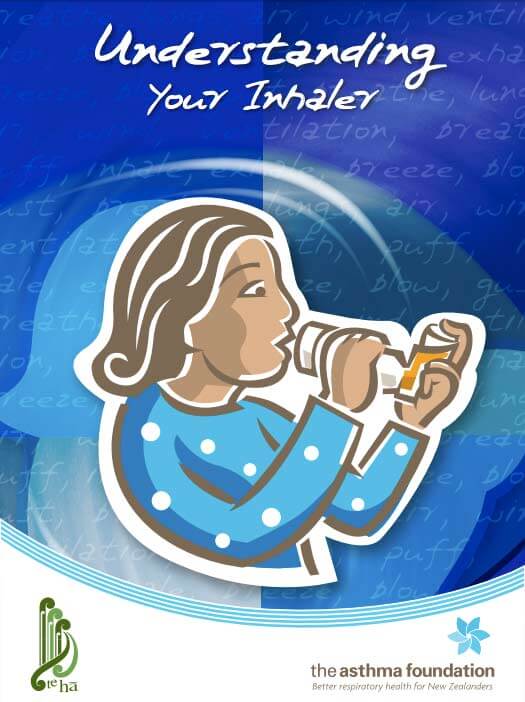
The Asthma Foundation, NZ, 2013
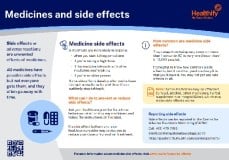
Medicines and side effects
Healthify He Puna Waiora, NZ, 2024
Credits: Sandra Ponen, Pharmacist, Healthify He Puna Waiora. Healthify is brought to you by Health Navigator Charitable Trust.
Reviewed by: Stephanie Yee, Pharmacist, Healthify He Puna Waiora.
Last reviewed:
Page last updated:


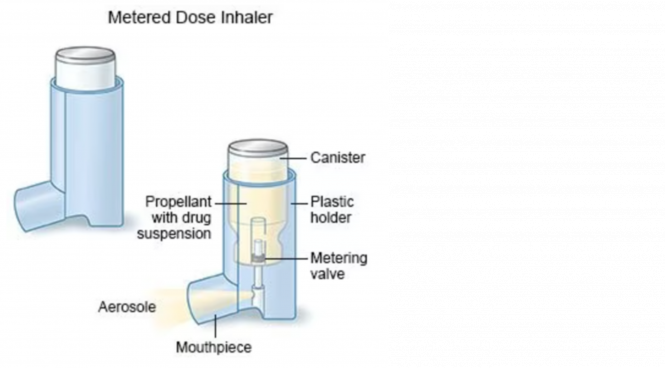 Image credit: With permission from
Image credit: With permission from 


